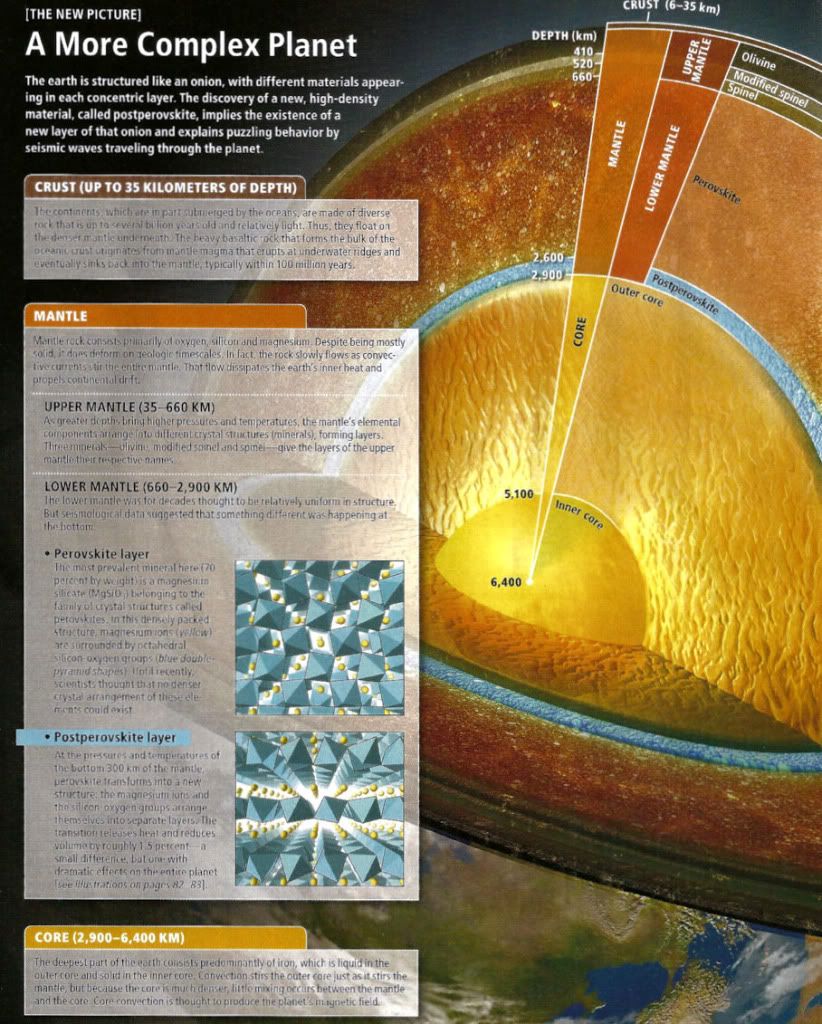Era Period (MYA) GEOLOGICAL EVENTS BIOLOGICAL EVENTS
PRE-CAMBRIAN ERA
HADEAN 4560-3800 Formation of Earth, solidification of crust, evidence of water, heavy bombardment. Prebiotic.
ARCHEAN 3800-2500 Beginning of rock record, evidence of plate tectonics, magnetic field generation. Protozoa (unicellular organism).
PROTEROZOIC 2500-540 Free oxygen in the atmosphere, glaciation¶, solidification of inner core. Metazoa (multicellular organism).
PALAEOZOIC ERA (Era of Ancient Life)
CAMBRIAN 540-500 (new timescale) Deposition of Burgess Shale. Invertebrates (trilobites), corals, sea life of many types proliferating.
ORDOVICIAN 500-425 Sea covered most of the planet. Vertebrates, first fish, mass extinction§.
SILURIAN 425-408 Land plants, jawed fishes, ammonoids.
DEVONIAN 408-362 Amphibians, forests, sharks.
CARBONIFEROUS 362-290 Swamps and coal bearing rocks. Insects, ferns.
PERMIAN 290-245 Formation of Pangaea (the super-continent),
desertification occurred. Reptiles, conifers.
MESOZOIC ERA (Era of Middle Life, Age of Reptiles)
TRIASSIC 245-208 First dinosaurs.
JURASSIC 208-145 Oldest surviving ocean floor. Height of dinosaurs, early mammals and birds.
CRETACEOUS 145-65 Oil and gas deposits, broke up of Pangaea, global mountain building. End of the dinosaurs, first flowering plants.
CENOZOIC ERA (Era of Modern Life, Age of Mammals)
TERTIARY 65-1.64 Himalayas and Alps folded. Evolutionary separation of apes and monkeys, most mammals established.
QUATERNARY 1.64-present Last ice age. Modern man.
Table 09-01 Geological Periods
************************************************
TOPIC NO 2:-LITHOSPHERE
Internal Structures
Earth's internal structure can be separated into four layers as shown in Figure 09-05a and explained in more details in the followings.
Crust - The outermost part of the Earth; this is what we walk around on. It is made of cold, brittle, and relatively light material. Under the continents, the crust averages about 30-40 km thick (more under tall mountains, somewhat less in other areas) and under the ocean, it averages about 5-6 km thick.
Continental crust is on average older, more silica-rich and thicker than oceanic crust, but is also more variable in each of these respects. The oldest parts of the continental crust, known as 'shields' or 'cratons', include some rocks that are nearly 4 billion years old. Most of the rest of the continental crust consists of the roots of mountain belts, formed at different stages in

Earth history.
Oceanic crust underlies most of the two-thirds of the Earth's surface, which is covered by the oceans. It has a remarkably uniform composition (mostly 49% 2% SiO2 ) and thickness (mostly 7 1 km). The ocean floor is the most dynamic part of the Earth's surface. As a result, no part of the oceanic crust existing today is more than 200 million years old, which is less than 5% of the age of the Earth itself. New oceanic crust is constantly being generated by sea-floor spreading at mid-ocean ridges, while other parts of the oceanic crust are being recycled into the mantle at subduction zones.
The boundary between the crust and the mantle is known as the
'Mohorovicic discontinuity', or 'moho'. The mantle material beneath the moho is not generally molten or even partially molten. The mantle only becomes partially molten in special circumstances such as in mid-ocean ridges, subduction zones or 'hotspots'. The crust is firmly attached to the uppermost part of the mantle and together they make up a rigid layer known as the 'lithosphere'. The rigid surface of the Earth is made up of 'plates' in the lithosphere, they move relative to one another and relative to the underlying part of the mantle, known as the 'asthenosphere'. The asthenosphere is also solid, but over millions of years it deforms in a manner similar to Plasticine (although it is actually many times more viscous).
2:- Mantle - Immediately below the crust is the mantle. It is made of rocky material similar to the crust, but it is very hot and not brittle. The material of the mantle acts like a solid over timescales of a second, hour, week, and up to several thousand years. Over hundreds of thousands to millions of years, however, mantle material acts as a very viscous fluid and can flow from one place to another in a process called convection. The mantle makes up about 70% of Earth's mass and about 45% of its radius. The bulk of the lower mantle is termed the mesosphere and is stronger than the asthenosphere
New study in 2010 reveals that there is a relatively thin layer at the bottom of the lower mantle, which has perovskite (MgSiO3) as its main composition. This thin layer underwent a phase transition to another crystal form at the specific temperature and pressure prevalent in that location (Figure 09-05b). According to computer simulations, it makes the mantle more dynamic and carries heat more efficiently than previously thought and thus explains the fast growth rate of the continents in the last 2 billion years. It may also be responsible for the hot spot in Hawaii, the evolution of the Earth's magnetic field, and the periodic precession of the Earth's axis of rotation
3:-Outer Core - Next is the outer core, which is made of very different material from the crust and mantle. The outer core is mostly iron, and is very hot. The iron mix which makes up the outer core is a fluid which moves around significantly in the course of only a few years. The fluid motions of the outer core generate Earth's magnetic field.
4:-Inner Core - Finally, there is the innermost part of the Earth, called the inner core. The inner core is mostly iron, similar to the outer core, but because the pressure is so much higher near the center of the Earth, the inner core is solidified. There is some evidence that the inner core may be spinning at a faster rate than the rest of the planet.
http://
guys ye last diagarme me written portion visible nhi ha per ye aur zoom nhi ho skta to plz isi me sa perhne ki kosish kejea ga.
apni duaon me mujhi yaad rakhea ga.regards sabahat